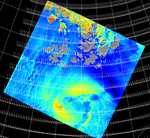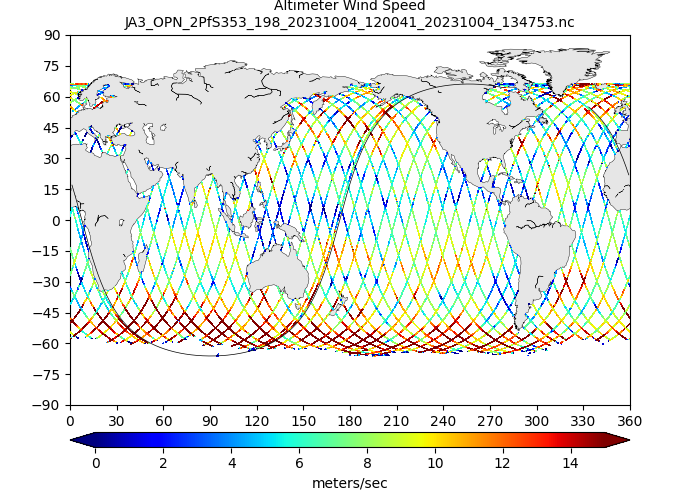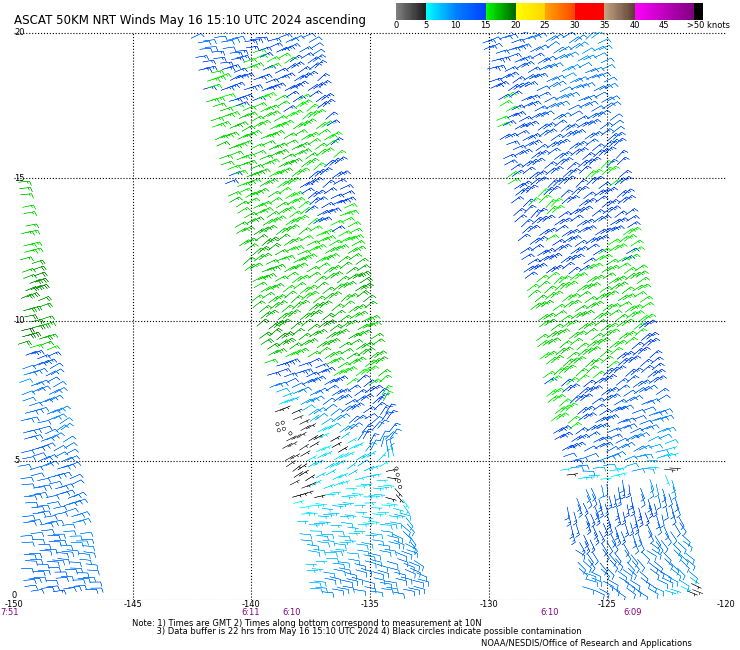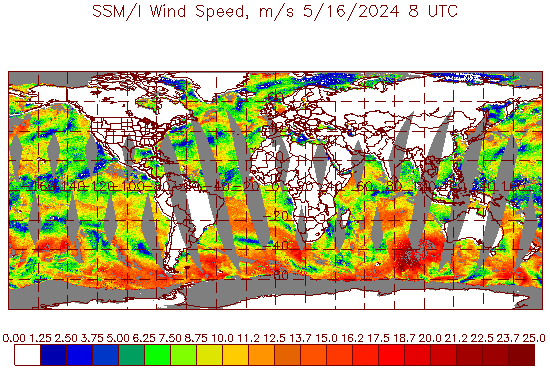
This product displays wind speed and direction at different altitudes (100-400 mb, 400-700 mb, and below 700 mb) using infrared data from geostationary satellites. It's created by tracking infrared energy signatures and guidance from numerical weather forecasts, available in both hemispheric and mercator projections.

The APL/NOAA SAR Wind Retrieval System (ANSWRS) converts SAR NRCS measurements into wind speed values at a 500m spatial resolution, similar to scatterometers but applied on a per-image basis as imagery is received.

Jason-3 wind speeds are estimated from the shape and intensity of the altimeter radar echo, representing ~2-5 km footprint depending on sea state, to within 1.6 meters/second.

The Advanced Scatterometer (ASCAT) provides 10-meter neutral stability winds, processed by NOAA/NESDIS using EUMETSAT's MetOp satellite data. Wind fields are detailed within 30x20 degree bins, accessible through an HTML link map. Click on a location for a closer view. This system partly compensates for QuikSCAT winds. Global wind images represent data from the past 22 hours at two resolutions: 25 Km and 50 Km.

This product displays ocean wind speed measured by the SSM/IS microwave sensor with high accuracy (0.1 m/s). Updates occur daily at 4 am EST. FNMOC generates it, and NOAA/NESDIS, along with the US Air Force and US Navy, acquires it through the Shared Processing Program. OSPO then converts and distributes the product in HDF-EOS and WMO BUFR formats to users.